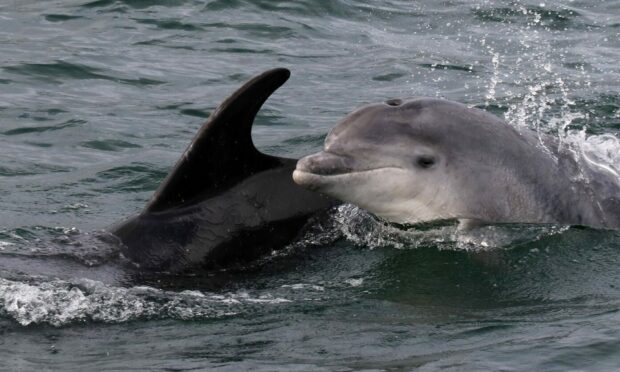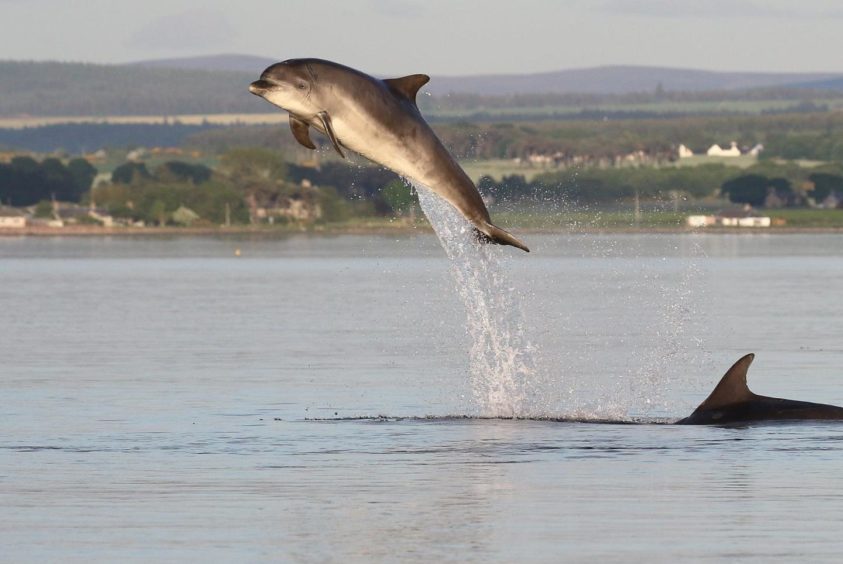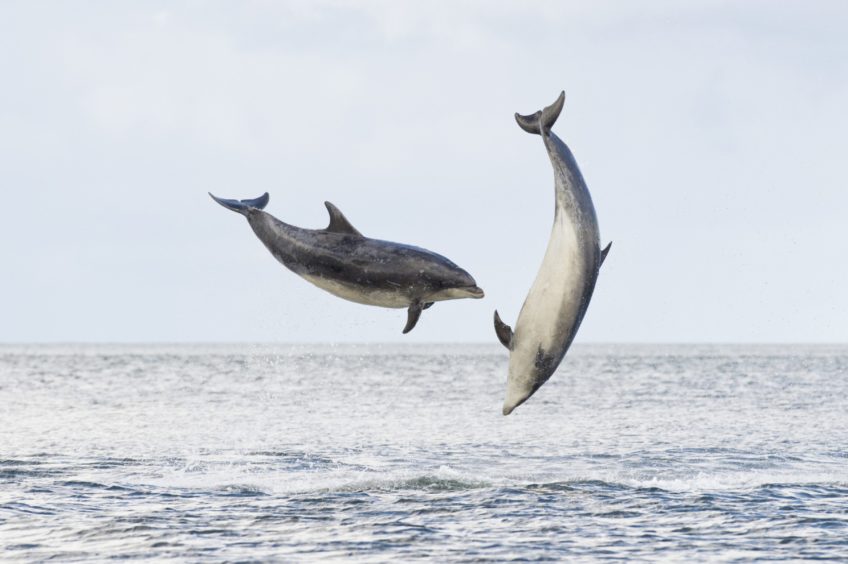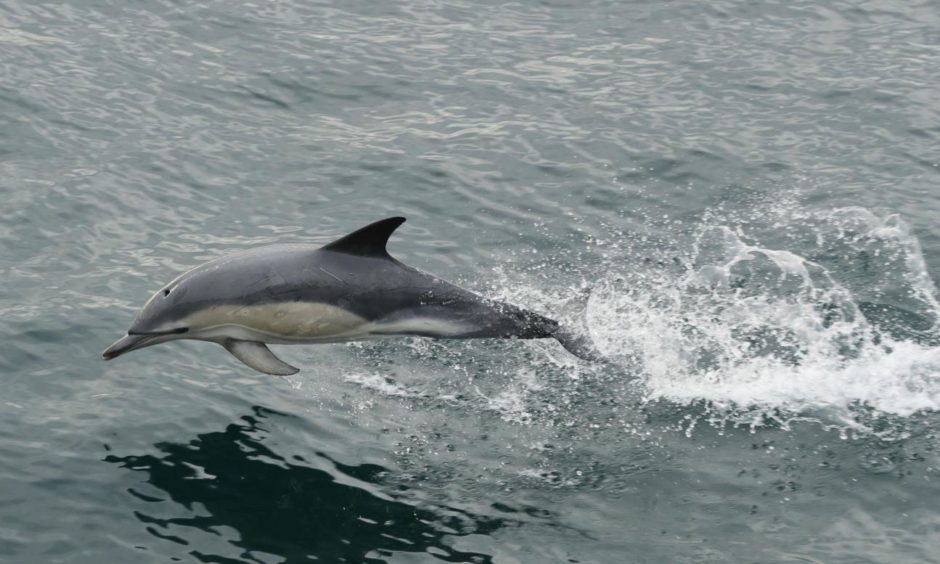Every cloud has a silver lining, and so it proved when a tyre puncture in Aberdeen gave me a spare couple of hours while it was being fixed in a repair centre near the beach.
I wandered onto the Beach Esplanade and then down towards Footdee where the north harbour breakwater juts out into the sea.
As is my habit, I scanned the sea and quickly saw the rolling fin of a bottlenose dolphin and then several more.
The dolphins caused great excitement among a group of walkers on the Esplanade – a vivid illustration of how nature inspires and enthrals.
Fast forward a few weeks, and I’m in the East Neuk of Fife near Crail.
I remarked to my wife that dolphins had been seen in the Forth in recent weeks, and no sooner had the words rolled off my lips, than a small group of bottlenoses materialised and glided past a cluster of creel buoys.
Dolphins far and wide
Over the past decade, I have seen more bottlenose dolphins than ever down the Scottish east coast, away from their traditional home area of the Moray Firth.
Indeed, some regularly venture as far south as Yorkshire, such is their wanderlust.
There have been many sightings of bottlenose dolphins in the Firth of Tay in recent weeks, with the narrows between Broughty Ferry and Tayport being an especially productive place to see them, presumably because fish such as salmon are moving up the river.
I wondered what was driving such long-distance movements along our coastlines, so I got in touch with Grant Ellis, a research assistant at the Sea Mammal Research Institute in St Andrews, who is part of a team which studies the east coast population of bottlenose dolphins as part of a long-term collaboration with the University of Aberdeen Lighthouse Field Station.
Expert opinion
Grant told me: “The population of bottlenose dolphins experienced a range expansion in the 1990s from the original core area in the Moray Firth south to the Tay Estuary and the Firth of Forth.
“Increasingly over the last few years, individual dolphins seen along the Scottish coast (identified by unique markings on their dorsal fins) are being spotted further south along the north-east coast of England, at least as far as Yorkshire.
“We do not fully understand the reasons for these range expansions, but they are likely related to a steady increase in total population size (with associated evidence of increased survival rates and reproductive rates) and sources of prey.
“Previous research has shown that areas of high use for bottlenose dolphins in Scotland are also important foraging areas, and it is likely there are such areas of the English coastline with relatively high abundance of suitable prey resources which the population is now also utilising.”
The institute’s ‘Citizen Fins’ project is encouraging people to submit dorsal fin photos in areas south of the Firth of Forth, including north-east England, so that researchers can continue to monitor the whole population effectively and learn more about the movement of individuals in this population.
To participate, visit: https://citizenfins.wp.st-andrews.ac.uk/














Conversation